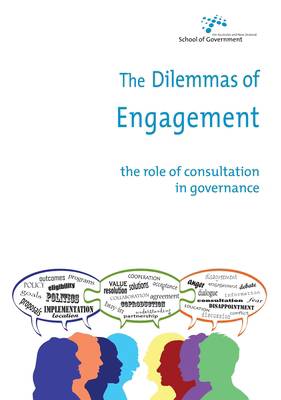
- Afhalen na 1 uur in een winkel met voorraad
- Gratis thuislevering in België vanaf € 30
- Ruim aanbod met 7 miljoen producten
- Afhalen na 1 uur in een winkel met voorraad
- Gratis thuislevering in België vanaf € 30
- Ruim aanbod met 7 miljoen producten
Zoeken
Omschrijving
'Consultation' has become something of a mantra in contemporary governance. Governments well understand that policy occurs in a highly contestable environment in which there are multiple, and often competing interests. They well recognise the political imperative to 'engage' stakeholders in order to manage potential conflict and, hopefully, obtain acceptance for their policies and programs. As a result, politicians and public officials frequently emphasise the need for consultation as an essential element of the deliberative processes underpinning the development of policy or the implementation of programs and services. But, moving beyond the rhetoric of consultation and engagement, how well is it done? In this monograph, Professor Jenny Stewart maps out the principal approaches used by governments to consult with and engage affected communities of interest. Stewart critically assesses the available literature and draws directly upon the experiences of political actors, bureaucrats and community sector organisations in order to identify the 'good, bad, and the ugly' of engagement. Through a judicious use of selected case studies, Stewart distils the essential dilemmas and contradictions inherent in many consultation strategies and highlights their relative strengths and weaknesses. This monograph is a probing and dispassionate analysis of the rationales, methodologies and outcomes of consultation and engagement. It is not intended to be a 'cookbook' or a 'how to' manual for those consulting or the consulted. Nevertheless, there is much here for the policy practitioner, the researcher and members of those 'communities of interest' who might, one day, find themselves the target of engagement.
Specificaties
Betrokkenen
- Auteur(s):
- Uitgeverij:
Inhoud
- Aantal bladzijden:
- 98
- Taal:
- Engels
- Reeks:
Eigenschappen
- Productcode (EAN):
- 9781921536823
- Verschijningsdatum:
- 1/06/2009
- Uitvoering:
- Paperback
- Formaat:
- Trade paperback (VS)
- Afmetingen:
- 176 mm x 250 mm
- Gewicht:
- 235 g

Alleen bij Standaard Boekhandel
+ 70 punten op je klantenkaart van Standaard Boekhandel
Beoordelingen
We publiceren alleen reviews die voldoen aan de voorwaarden voor reviews. Bekijk onze voorwaarden voor reviews.








